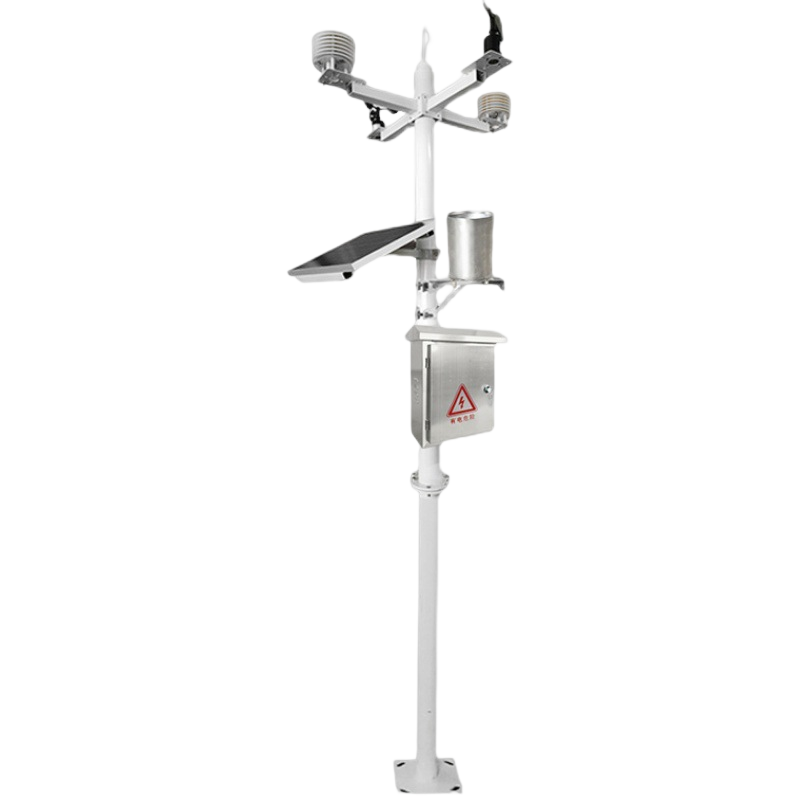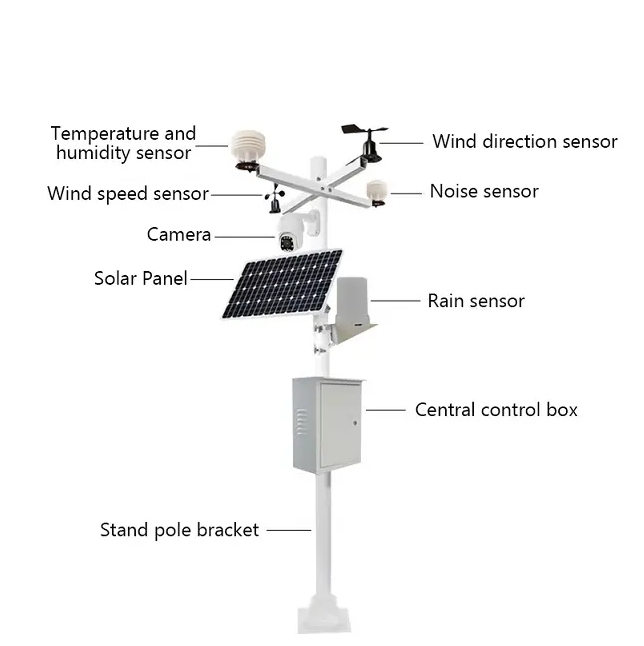

— Blogs —
—Products—
 Consumer hotline +8618073152920
Consumer hotline +8618073152920 WhatsApp:+8615367865107
Address:Room 102, District D, Houhu Industrial Park, Yuelu District, Changsha City, Hunan Province, China
Product knowledge
Time:2024-03-24 16:11:55 Popularity:6073
A weather station is a facility, either on land or on a ship, equipped with instruments and sensors to measure atmospheric conditions and weather patterns.
A weather station works by using a combination of sensors to measure various atmospheric conditions.These sensors typically include instruments to measure temperature, humidity, barometric pressure, wind speed, wind direction, and sometimes precipitation.
The sensors collect data at regular intervals, and this data is then processed and stored within the weather station itself or transmitted to a central database.Some advanced weather stations may also be equipped with additional sensors for UV radiation, solar radiation, soil moisture, and more.
The collected data can be used to analyze current weather conditions, track changes over time, and even make short-term or long-term weather predictions.Some weather stations are also capable of interfacing with computers or online platforms to provide real-time updates and historical data analysis.

1. Sensors and Instruments: A weather station is equipped with various sensors and instruments to measure different atmospheric parameters:
- Thermometer: Measures temperature.
- Hygrometer: Measures humidity.
- Barometer: Measures atmospheric pressure.
- Anemometer: Measures wind speed.
- Wind vane: Indicates wind direction.
- Precipitation gauges: Measure the amount of rainfall or snowfall.
- Radiation sensors: Measure solar radiation or other types of radiation.
2. Data Collection: The sensors collect data at regular intervals. Modern weather stations often use digital sensors that can transmit data automatically and in real-time to a central database or weather service.
3. Data Transmission: The collected data can be transmitted in several ways:
- Radio transmission: The data can be sent via radio waves to a nearby base station or directly to a weather service.
- Satellite communication: Some weather stations, especially those in remote areas or on ships, send data to satellites, which then relay the information to Earth.
- Cellular networks: With the use of cellular modems, weather stations can transmit data over mobile networks.
4. Data Processing and Analysis: The collected data are processed and analyzed to create weather reports, forecasts, and climate studies. This information is used for a variety of purposes, including agriculture, aviation, shipping, city planning, and emergency management.
5. Weather Forecasting: Weather stations provide data that is into complex computer models. These models simulate the atmosphere and help meteorologists predict future weather conditions.
6. Visual Observations: Meteorologists also rely on human observations from weather stations, such as the appearance of clouds, the presence of precipitation, or visibility conditions.
7. Remote Sensing: Some weather stations include remote sensing equipment, such as radar or lidar systems, which can measure properties of the atmosphere from a distance.
8. Historical Data: Weather stations maintain detailed records of past weather conditions, which are essential for climate studies and long-term weather trend analysis.
Weather stations come in various sizes and types, from small portable units used for specific events or research to large, permanently installed systems that provide continuous monitoring. The accuracy and reliability of the data collected by weather stations are vital for the safety and well-being of societies around the world.

Overall, weather stations play a crucial role in monitoring and analyzing local weather patterns, providing valuable information for various applications including agriculture, aviation, research, and everyday weather forecasting.
Related recommendations
Sensors & Weather Stations Catalog
Agriculture Sensors and Weather Stations Catalog-NiuBoL.pdf
Weather Stations Catalog-NiuBoL.pdf
Related products
 Combined air temperature and relative humidity sensor
Combined air temperature and relative humidity sensor Soil Moisture Temperature sensor for irrigation
Soil Moisture Temperature sensor for irrigation Soil pH sensor RS485 soil Testing instrument soil ph meter for agriculture
Soil pH sensor RS485 soil Testing instrument soil ph meter for agriculture Wind Speed sensor Output Modbus/RS485/Analog/0-5V/4-20mA
Wind Speed sensor Output Modbus/RS485/Analog/0-5V/4-20mA Tipping bucket rain gauge for weather monitoring auto rainfall sensor RS485/Outdoor/stainless steel
Tipping bucket rain gauge for weather monitoring auto rainfall sensor RS485/Outdoor/stainless steel Pyranometer Solar Radiation Sensor 4-20mA/RS485
Pyranometer Solar Radiation Sensor 4-20mA/RS485
Screenshot, WhatsApp to identify the QR code
WhatsApp number:+8615367865107
(Click on WhatsApp to copy and add friends)
